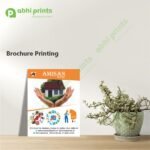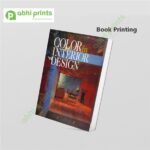In an era where digital communication reigns supreme, the relevance of printed business cards might seem to be fading. However, contrary to popular belief, the power of printed business cards in a digital age remains undiminished. These tangible pieces of personal branding continue to play a pivotal role in networking, leaving lasting impressions, and bridging the gap between online and offline interactions.
The Enduring Relevance of Business Cards
1. Tangible Connections in a Digital World
Despite the rise of virtual networking tools and social media platforms, printed business cards offer a tactile connection that digital alternatives simply cannot match. When you hand someone a business card, you provide a physical reminder of your encounter. This physical exchange creates a memorable interaction, often leading to stronger professional relationships.
2. First Impressions Matter
Your business card is often the first impression potential clients or partners have of you and your brand. A well-designed card can convey professionalism, creativity, and attention to detail. In a crowded marketplace, a unique and aesthetically pleasing business card can set you apart from the competition, sparking curiosity and engagement.
3. Convenience and Accessibility
Business cards are incredibly convenient. They fit easily into wallets, pockets, and purses, making them readily accessible whenever needed. Unlike digital contacts that might get lost in a sea of emails or social media connections, a business card is a constant, visible reminder of your contact information. It’s also a practical solution in environments where digital devices are not always at hand or feasible to use.
Bridging the Digital Divide
4. Enhancing Digital Presence
Printed business cards can seamlessly integrate with your digital presence. Including QR codes that link to your website, LinkedIn profile, or online portfolio allows recipients to quickly access more detailed information about you and your services. This fusion of physical and digital networking ensures that your business card remains relevant and enhances your overall professional image.
5. Personal Touch in Follow-Ups
After a networking event or a business meeting, following up with a personalized message referencing your business card can leave a lasting impact. Mentioning specifics from your encounter and referring to the physical business card shared adds a personal touch that digital-only interactions often lack. This approach can significantly boost the chances of continued communication and collaboration.
Design Tips for Effective Business Cards
6. Keep It Simple Yet Informative
A cluttered business card can be overwhelming. Ensure your card includes essential information such as your name, title, company, phone number, email, and website. A clean, minimalist design with ample white space is more visually appealing and easier to read.
7. Reflect Your Brand Identity
Your business card should reflect your brand’s identity and values. Use colors, fonts, and graphics that align with your overall branding. Consistency between your card and your website or other marketing materials reinforces your brand image and makes it more recognizable.
8. High-Quality Materials Matter
The quality of your business card speaks volumes about your professionalism. Investing in high-quality paper and printing can make a significant difference. Consider options like embossed lettering, foil accents, or unique finishes to give your card a premium feel.
Conclusion
In conclusion, the power of printed business cards in a digital age cannot be underestimated. They offer a tangible connection, create memorable first impressions, and bridge the gap between physical and digital interactions. By integrating thoughtful design and leveraging their convenience, printed business cards remain an indispensable tool for effective networking and professional branding.
In a world dominated by screens, the simple act of exchanging a business card can leave a profound and lasting impact. So, don’t underestimate the potential of this traditional tool—embrace the power of printed business cards and make your mark in the digital age.



